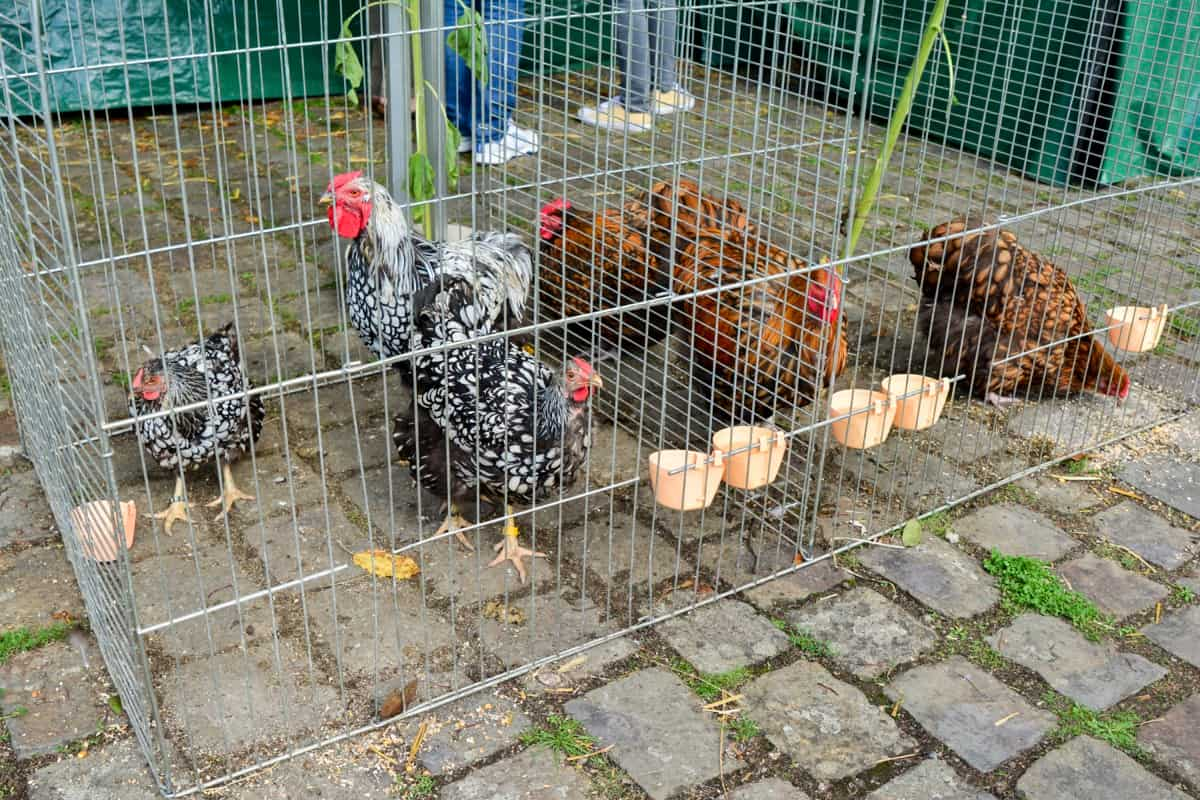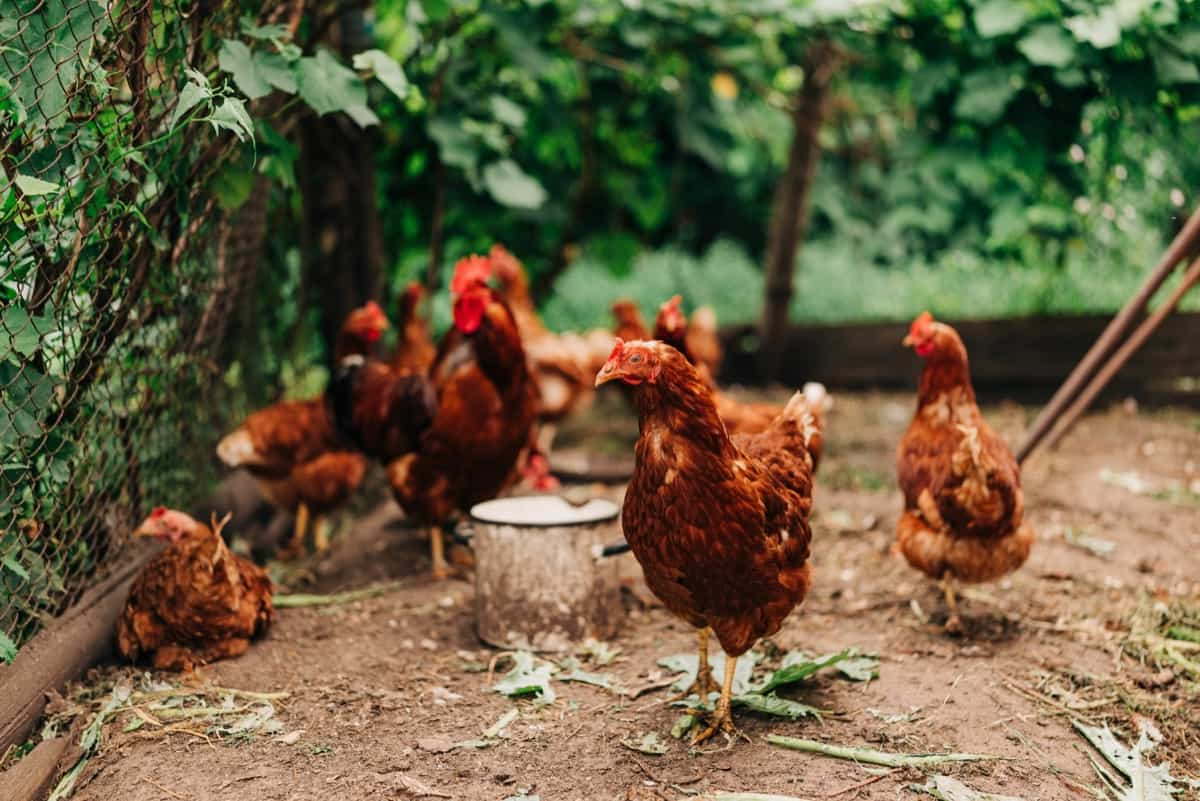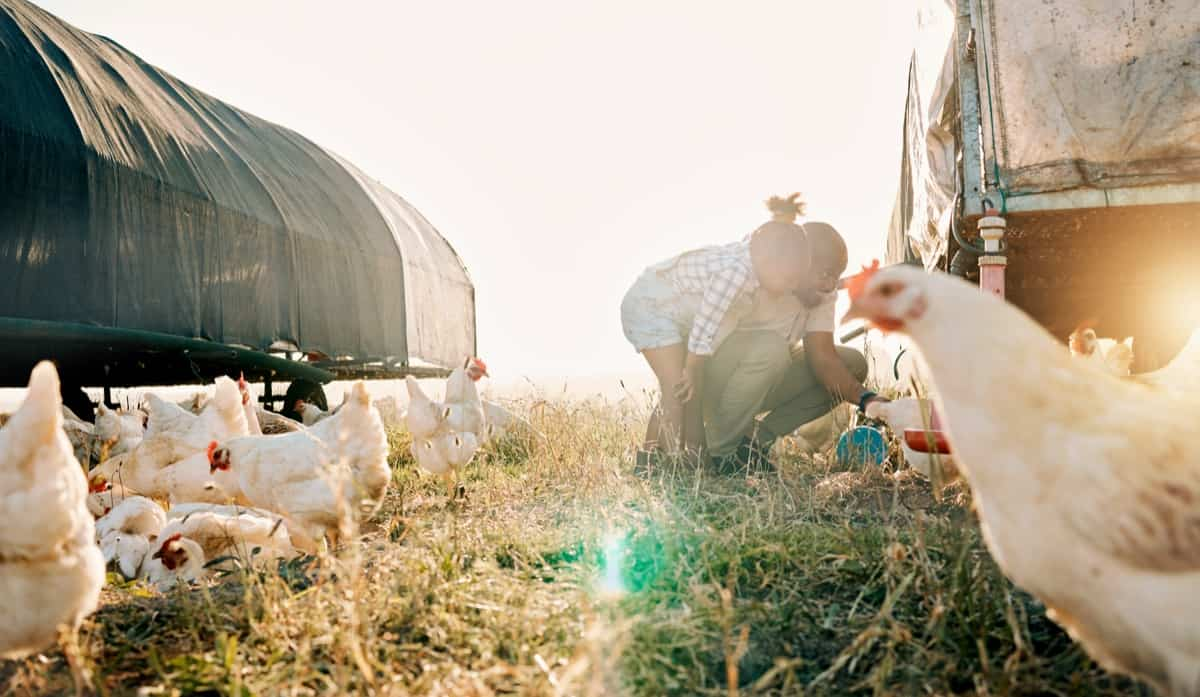Raising chickens can be a rewarding and sustainable endeavor. Not only do chickens provide eggs and meat, but they also help in pest control and provide natural fertilizer for your garden. While traditional chicken coops are commonly used, there are alternative methods available for those who do not have access to a coop. This article will explore the 8 best alternative ways to raise chickens without a coop.

Ways to Raising Chickens Without a Coop
Backyard Chicken Keeping: Raising Chickens Without a Coop
Backyard chicken keeping is one of the simplest alternatives to a traditional chicken coop. This method allows your chickens to roam freely around your backyard during the day and provides a secure shelter at night. This shelter can be as simple as a converted shed or a small, enclosed area with a roof and walls. Make sure it is well-ventilated and predator-proof to keep your chickens safe.
In case you missed it: Chicken Coop Deep Littering: How to Use it and Benefits

To implement backyard chicken keeping successfully, you should ensure that your backyard is adequately fenced to prevent your chickens from wandering off or becoming vulnerable to predators. Additionally, it’s essential to provide your chickens with proper food and water sources and regularly clean their shelter to maintain a healthy environment.
Chicken Trailers: A Mobile and Versatile Option
Chicken trailers are essentially small, enclosed trailers modified to accommodate chickens. They typically have wheels for easy transportation and are equipped with features such as roosting bars, nesting boxes, and access doors. Some trailers also have built-in feeding and watering systems, making caring for your chickens on the go even more convenient.
The main advantage of using chicken trailers is the ability to rotate your chickens’ grazing area. Moving the trailer to different locations ensures your chickens access fresh grass and insects, improving their overall health and well-being. This also helps to prevent the depletion of vegetation in a single area, promoting a more sustainable and natural environment for your chickens. When using a chicken trailer, it is important to secure it properly to prevent it from tipping over or being damaged during transportation.
Chicken Tractors: A Portable and Low-Cost Option
Another excellent alternative to a traditional coop is using a chicken tractor. It is a portable enclosure that allows your chickens to forage on fresh grass while protecting them from predators. This option is particularly suitable for those with limited space or who want to move their chickens around their property for natural fertilization.
A chicken tractor can be built using lightweight materials such as PVC pipes and chicken wire. It should have wheels for easy movement and an enclosed area for chickens to sleep and lay eggs. Regularly moving the chicken tractor ensures that your chickens have access to fresh vegetation while minimizing the damage to your lawn or garden.
Hoop Coops: A Versatile and Affordable Option
Hoop coops are a popular alternative to traditional chicken coops. They are versatile, affordable, and easily constructed using simple materials. Hoop coops are mobile structures made of PVC pipes or metal hoops covered with a tarp or plastic sheeting. These structures provide chickens shelter and protection, allowing them to roam and forage freely. Hoop coops also protect from predators, such as foxes and raccoons, as the enclosed structure prevents them from accessing the chickens.
In case you missed it: The Perfect Poultry Pair: Raising Turkeys and Chickens Together

Moreover, the open design of hoop coops promotes good ventilation, which is crucial for the health and well-being of your chickens. In terms of affordability, hoop coops are a cost-effective option compared to traditional coops. The materials required for constructing a hoop coop are relatively inexpensive and readily available. With some basic DIY skills, you can easily build a hoop coop at a fraction of the cost of a traditional coop.
Chicken Arks: A Traditional Option for Small Flocks
These portable structures combine a sheltered area for roosting and nesting with an open bottom section that allows the chickens to forage on fresh grass and insects. Chicken arks are typically made of wood and wire mesh, protecting from predators while allowing the chickens access to fresh air and sunlight. One of the main benefits of chicken arks is their suitability for small flocks.
If you have a limited number of chickens, a chicken ark can provide them with adequate space and shelter. The portable nature of chicken arks allows you to easily move them around your property, ensuring that your chickens have access to fresh grazing areas and preventing soil erosion and overgrazing. This also allows you to provide your chickens with a varied diet, as they can forage on different patches of grass and insects.
Chicken Pallets: A Low-Cost and Versatile Option
If you’re interested in raising chickens but don’t have the space or budget for a traditional coop, chicken pallets can be an excellent alternative. Pallets are readily available in the market and can be repurposed into a functional and affordable chicken habitat. Find a suitable location in your yard to create a chicken pallet setup. Ensure the area is secure and protected from predators. Next, gather a few pallets that are in good condition. Please ensure they are clean and free from harmful chemicals or substances.
Begin by attaching the pallets to form the walls of the chicken habitat. Use screws or zip ties to secure them in place. Leave an opening for the entrance and exit of the chickens. You can also add a small door for easy access to collect eggs or clean the area. Inside the pallet structure, provide a nesting area for your chickens. Use straw or wood shavings to create a comfortable and cozy space for them to lay their eggs. It’s essential to clean and replace the bedding to maintain hygiene regularly.
Chicken Huts: A Unique and Fun Option
Chicken huts come in various designs and sizes, allowing you to choose one that suits your preferences and available space. They often resemble miniature houses or cottages, adding a touch of whimsy to your backyard. Select a flat area in your yard and prepare the ground for a chicken hut. Ensure it is level and free from sharp objects or debris that could harm the chickens. Position the hut in the desired location and secure it to the ground using stakes or screws. Inside the chicken hut, provide perches for your chickens to roost on.
These can be wooden branches or dowels securely attached to the walls. Additionally, include nesting boxes with soft bedding for the hens to lay their eggs in. Chicken huts should have windows or openings that can be easily adjusted to the weather conditions to ensure proper ventilation. This will help regulate the temperature inside the hut and prevent moisture buildup. Remember to regularly clean the chicken huts to maintain a healthy environment for your chickens.
Chicken Tents: A Portable and Low-Cost Option
Raising chickens without a traditional coop may seem challenging, but alternative methods can provide a safe and comfortable environment for your feathered friends. One such option is using chicken tents. These portable structures offer several advantages for those looking to raise chickens without the expense and permanence of a traditional coop.
In case you missed it: 10 Chicken Breeds With Black Meat: Dark Delights

Chicken tents are typically made of lightweight materials such as canvas or nylon, making them easy to set up and take down as needed. They are also relatively inexpensive compared to building a permanent coop. This makes them an attractive option for those on a tight budget or those who may be unsure about committing to raising chickens long-term.
Conclusion
These eight alternative ways to raise chickens without a coop offer flexibility and can be tailored to your circumstances. Whether you choose any of the above, the key is to provide a safe and comfortable environment for your chickens to thrive. Ensure they have access to fresh food, water, shelter, and protection from predators, and you’ll be well on your way to a successful chicken-raising experience.
- Feed Your Flock for Less: Top 10 Tips to Save on Chicken Feed
- Ultimate Guide to Ossabaw Island Hog: Breeding, Raising, Diet, and Care
- Hatching Answers: The Top 10 Reasons Your Chickens Aren’t Laying Eggs
- Eggs and Economics: Breaking Down the Cost of Raising Backyard Chickens
- Defend Your Greens: Proven Methods to Keep Iguanas Out of Your Garden
- Ultimate Guide to Cinnamon Queen Chicken: A Comprehensive Guide for Beginners
- Ultimate Guide to California Tan Chicken: Breeding, Raising, Diet, Egg-Production and Care
- Ultimate Guide to Marsh Daisy Chicken: Breeding, Raising, Diet, and Care
- 10 Types of Chicken Farming Businesses You Can Start for Profits